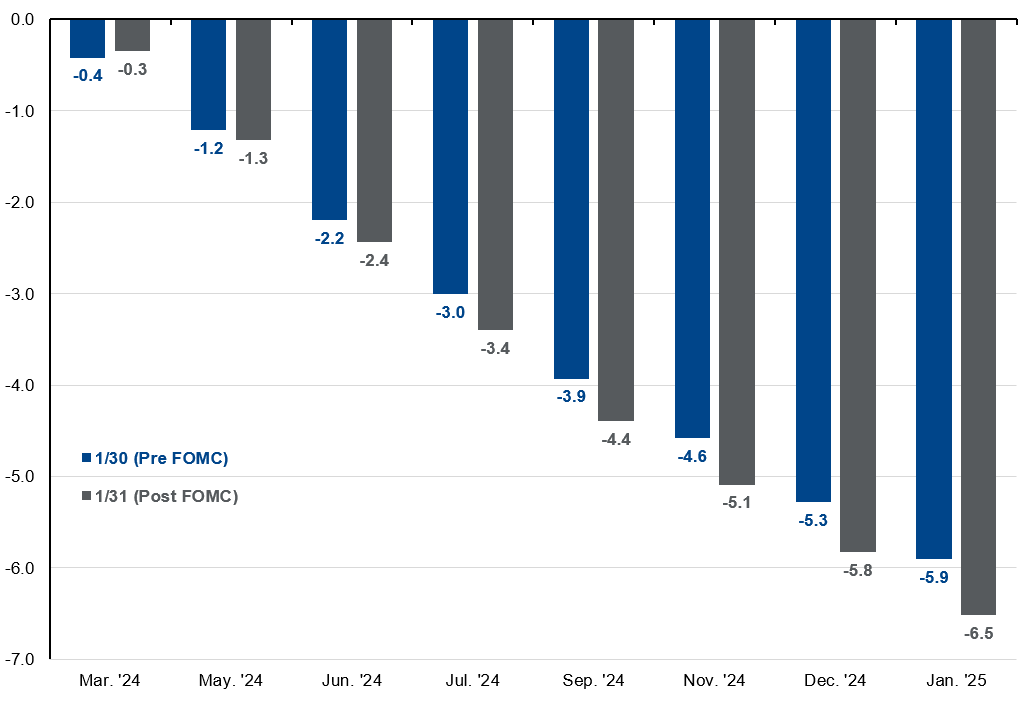Written by: Jordan Jackson
At the first Federal Open Market Committee (FOMC) meeting of the year, the FOMC voted to leave the Federal funds rate unchanged at a target range of 5.25%-5.50%. There were notable adjustments to the statement language which suggest that while the committee remains biased to cutting interest rates, it may not begin easing policy as soon as markets anticipate.
The statement acknowledged the solid pace of economic activity following the strong fourth quarter growth reading and still firm employment data. It also maintained the language highlighting that while inflation “has eased over the past year,” the current run rate is still elevated. Elsewhere it removed the text around tighter credit and financial conditions weighing on economic activity, perhaps a nod to the loosening in financial conditions in the fourth quarter of last year.
Notably, it adjusted the language “to the extent of any additional policy firming” to “In considering any adjustment to the target rate”, suggesting the next move from the committee will be rate cuts. That said, the text was explicit in stating “the committee does not expect it will be appropriate to reduce the target range” until inflation is sustainably moving to 2%, a message emphasized by Chairman Powell at the press conference. Given the underlying strength in the economy, and the ability for labor markets to seemingly shrug off higher interest rates, the Fed can remain more focused on its inflation mandate than on the job market. It does appear that the balance of risks is skewed towards inflation remaining sticky rather than the economy falling into recession.
At the press conference, Chairman Powell emphasized the committee’s bias to reducing rates this year, however, the timing of the cuts will depend on how confident the committee is on achieving 2% inflation. In fact, Powell stated that recent data leads him to believe that a first rate cut in March is not likely, suggesting that the Fed will be cautious about cutting interest rates prematurely if growth remains strong and labor markets remain tight. When asked about productivity, Powell acknowledged that he is unsure if the recent productivity surge will last and highlighted that, if it doesn’t, it remains unclear whether inflation can come down sustainably without wages falling as well. Importantly, Powell’s comments indicated that while the Fed is not ready to scale back quantitative tightening yet, they would talk about that process more in depth at the upcoming March meeting.
Market reaction was a bit conflicting. Bond yields fell across the curve while stocks sold off. Bond markets may be cheering the prospects of future cuts, yet risk assets may be uneasy that those cuts won’t materialize until later in the year. All things considered, we continue to expect the Fed will reduce rates three times, electing to ease policy in June, September, and December this year.
Less cuts now, more cuts later
Federal funds futures, cumulative number of 25bp cuts implied by market pricing

Source: Bloomberg, J.P. Morgan Asset Management. Data are as of January 31, 2024.
Related:



